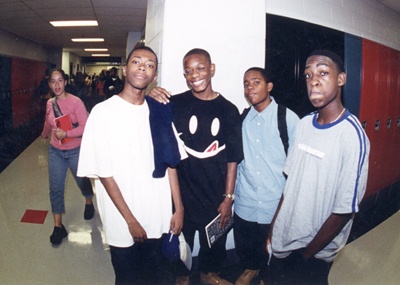All Nonfiction
- Bullying
- Books
- Academic
- Author Interviews
- Celebrity interviews
- College Articles
- College Essays
- Educator of the Year
- Heroes
- Interviews
- Memoir
- Personal Experience
- Sports
- Travel & Culture
All Opinions
- Bullying
- Current Events / Politics
- Discrimination
- Drugs / Alcohol / Smoking
- Entertainment / Celebrities
- Environment
- Love / Relationships
- Movies / Music / TV
- Pop Culture / Trends
- School / College
- Social Issues / Civics
- Spirituality / Religion
- Sports / Hobbies
All Hot Topics
- Bullying
- Community Service
- Environment
- Health
- Letters to the Editor
- Pride & Prejudice
- What Matters
- Back
Summer Guide
- Program Links
- Program Reviews
- Back
College Guide
- College Links
- College Reviews
- College Essays
- College Articles
- Back
On The Fallacy Of Class Rank MAG
When I apply to college nextyear, admissions officers will consider many factors in deciding whether or notto admit me: SAT I and SAT II scores, the difficulty of classes I have taken (andhow I did), my extracurricular involvement and work experience, my essays,interviews, recommendations by my counselor and teachers, and any awards andhonors I have received.
In short, each of these factors can giveadmissions officers a sense of the answers to two vital questions: "Howlikely is this student to succeed academically at this school?" and"What is this student likely to contribute to this school, both in and outof class?"
While these considerations are important, there is atleast one other factor, one that is likely to weigh as heavily as any foradmissions officers: class rank. To understand class rank, consider a graduatingclass of 100 students. The basic concept is to list from highest to lowest thecomputed grade point averages (GPAs), giving the student with the highest GPA therank of one, the student with the second highest GPA the rank of two, and so on.(At the U. S. Naval Academy, the student ranked last is given the"celebrated" title of Class Anchor.)
At my school, students arenot ranked by number, but by decile. So, a student whose rank is in the top tenpercent is said to be in the first decile, those in the second ten percent in thesecond decile, and so on. This is slightly better than precise ranking because itcreates fewer false distinctions between students' achievements. But it stillkeeps almost all the problems of the precise class rank.
Whatever youropinion about grades, it is hard to deny that, with little exception, it takesmore effort/ intelligence/skill/energy/participation to get a B in an honorsclass than an A in a standard class. To compensate for this inequity, my schoolweights the grade point average at .25 for Honors classes and .5 for AdvancedPlacement classes. For example, a B in an Honors class is factored into the GPAas 3.25, while a B in a standard class is factored in as 3.0.
Comparingstudents should, in theory, accurately assess the success of students inparticular classes compared to their peers in similar classes. There is noscientific basis for weighting Honors classes at .25 or AP at .5. My school chosethese values because they seem fair and equitable. They are neither, asdemonstrated by this example: a student who takes four honors classes and getsB's in each will have the same GPA as someone who takes four standard classes andgets three B's and one A. Sadly, many students take classes that are thought tobe "easy A's" in order to improve their GPAs and class ranks.
Itis easy to argue that a person should rise to the level of the classes they arecapable of taking so that grade weighting is appropriate. The truth is, there isno one correct weighting because different classes taught by different teachersare extraordinarily inconsistent in their content, workload, expectations andharshness of grading. This gets to the heart of the problem of class rank.Because of these factors, a student's class rank cannot be assumed to reflectaccurately his or her academic success, past or future.
I recognize thatmy rank, in the fourth decile, is destined to be a great hindrance when I applyto college. While high school rank may be a good predictor of college rank, itpredicts neither academic achievement nor enrichment of the college community.
So, why do most high schools continue to rank? While the administratorsof many schools are opposed to it as a practice, they are concerned that collegeadmissions officers will discount an application that omits a rank. I believethat if admissions officers spoke out against class rank, it would disappearwithin years.
Change will not be immediate. But just because a processtakes time does not mean it is not worth doing. Ad-missions officers: you havethe power, use it!

Similar Articles
JOIN THE DISCUSSION
This article has 1 comment.

0 articles 0 photos 12292 comments